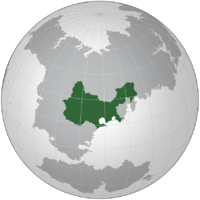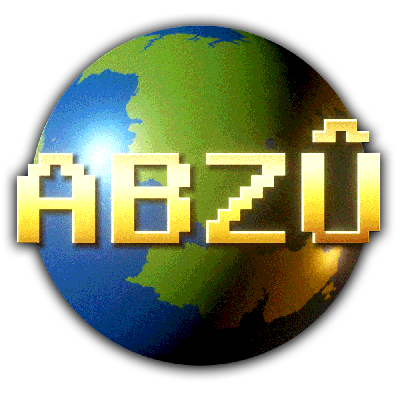Qonklaks
Union of Democratic Revolutionary Qonklaks Yàn Yaunkài Kãju Kwai Kwan | |
|---|---|
| Motto: Mhàin ngeiq nga liq "Millions of people as one heart" | |
| Anthem: Okwai Yàn Yaunkài Kãju Kwai Kwan "State Anthem of the Union of Democratic Revolutionary Qonklaks" | |
National seal | |
 Qonklaks' territorial extent | |
| Capital and largest city | Jikhein |
| Official languages | Standard Kwang |
| Recognized regional languages | Kufa, Öwi, Karduvic, Ru |
| Ethnic groups (1995) | 89.2% Kwang 6.1% Kufa |
| Religion (1995) | 55.3% Non-religious/folk religion |
| Demonym(s) | Qonklese |
| Government | One-party cenonist federal union |
| Jiq Zàw | |
• Premier | Dai Chì |
| Population | |
• Estimate | 962,445,000 (1st) |
| GDP (nominal) | 1995 estimate |
• Total | $5.320 trillion |
• Per capita | $5529.58 |
| HDI (1995) | 0.712 high |
| Currency | Qonklese chih (₡) (QKC) |
| Driving side | right |
| Calling code | +01 |
Qonklaks (Standard Kwang: Kwai Kwan /kwɛ́ kwã́/, lit. "The Kwang nation"), officially the Union of Democratic Revolutionary Qonklaks, is a country located in Southern Tammuz. It shares a border with Ö, Zaizung, Karduv, Rongyo, Mai Thi, and Riyana. With a population of 962.4 million and an area of over 7 million square kilometers, it is both the most populous and largest country on Abzû.
As one of Abzû's cradles of civilization, it enjoyed its status as a high culture. Its influence traditionally encompassing the entirety of Soltenna, with many surrounding countries within the Quoncosphere adopting its language, culture, food, and dress habits. For over four millenia, Qonklaks' political system was ruled over by dynasties. Since the Kingdom of Wa, the controversial political entity traditionally considered to be the first Qonklese dynasty, Qonklaks has undergone periods of varying degrees of political unity, with long periods alternating between regional warlordism and unified rule under one supreme monarch.
Under the Byàn Dynasty, Qonklaks officially adopted Hanctheism, an organized, monotheistic interpretation of Haomism that had been in practice for the past millenium. Qonklaks became a constitutional monarchy in 1732 after of the Jiqjõ Reforms, adopting a tricameral parliamentary system.
The country fractured and fell to petty warlordism in 1903 after a brief period of military junta rule by Grand Marshal Lyĩ Bain, only uniting in 1928 under Dain Pain's new Qonklese Empire. The country would experience a mild economic boom and various military reforms to unite the warlord armies into the Qonklese Imperial Army. Dain Pain lead the nation into a period of aggressive territorial expansion against its neighbours, only for its war efforts to be halted via an internal revolution led by the cenonist Ngonku 88th Division in 1942, which led to the start of the Qonklese Civil War. The Ngonku, led by Mheiq Ku, abolished the four-millenia-old dynastic monarchist system, replacing it with its current political structure in 1950. The Qonklese Civil War officially ended on May 10th, 1950, but several imperial rump states continued to fight on until 1962 despite the capture and subsequent death of Dain Pain.
Ideological tensions with the rest of world led to a soft coup in 1975 to initiate reforms to partially privatize the economy, led by Jiq Zàw, who replaced Mheiq Ku as Supreme Overseer. The country experienced a period of economic prosperity and loosening of political and religious expression under the New Spring Initiative during the 80s, known as the Golden Age of Commerce. The decade was also known for its political instability, stemming from the state's draconic response to the 1985 SARS epidemic that started in Wii Province that eventually culminated with the 1986 Downtown Stadium Incident. As a direct response to the turmoil, the Golden Kwang clamped down on various freedoms previously guaranteed by the state as a preventative measure against mass protests and gatherings.
Today, Qonklaks is a one-party cenonist federal union, which de jure claims allegiance to cenonist ideals despite being a market economy. It has one of the world's most powerful economies, though ranking poorly in basic freedoms. Qonklaks is one of several Abzû nuclear powers.
Etymology
The demonym Kwan can refer to both the ethno-linguistic Kwankyaiq people (where one would use the adjective 'Kwang'), or to the nation of Qonklaks regardless of ethnic or linguistic specification (the adjective 'Qonklese'). The word can be traced back to the Proto-Macro-Kwang root *kʷaːŋ 'sun'.
Names of Qonklaks
Qonklaks bears several other names, usually used poetically or as epithets.
Four Realms
The term Four Realms (Standard Kwang: Hài Lhain /hɛ̀ ɬaɪ̃́/) has been used to describe the territories controlled by various Qonklese polities over several millenia. The term first arose during the Lya Dynasty as a way to contrast themselves with their non-Kwang neighbours, who were collectively referred to as the Four Barbarians. In its current usage, the Four Realms refers to Qonklaks' four first-level subnational administrative divisions: Central Realm, Northeastern Realm, Northwestern Realm, and the Southwestern Realm. In practice, provinces are treated as the first-level administration division, as the sheer size of these realms has little practical use in daily administration. This fact can be seen by the fact that only Qonklese provinces have flags.
History
Prehistory
eeee
Early Kingdoms
aaa
Warring States
eeee
Imperial Dynasties
Lya, Pàn, and the Twin Dynasties
aaaa
Yain, Shèin, and the Three Kingdoms
aaae
Hi, Bi, and Twã
aaeik
Two-Hundred-Year Unrest
we
Byàn and the Celestial Kingdom
e
Warlord Era
ee
Qonklese Empire and the Qonklese Civil War
a
Union of Democratic Revolutionary Qonklaks
a


